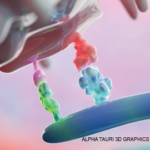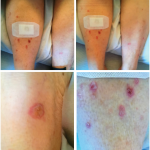Through the use of imputation to identify and fine-map genetic associations in IIM, the authors were able to identify three new genome-wide associations across all patients: STAT4, SDK2, and LINC00924. They also identified a novel genome-wide association with NAB1 in the subgroup of patients with polymyositis. Finally, the HLA region was found to be the most significant genetic risk factor for the entire IIM group, and the most significant risk in this region was seen in the group with antibodies to Jo-1. This is important since the study represents the largest genetic association study to date investigating non-HLA genes in patients with anti-Jo-1 autoantibodies.4
Dr. Amos was able to describe research techniques that are novel and interesting, and clearly the future of investigation on myositis will continue to employ these strategies.
In Sum
The entirety of the session was informative and exciting, and the audience was provided both with clinical pearls and food-for-thought regarding future research directions. The effects of myositis may be to cause weakness, but the strengths of this session can be found in the light that is now shed on understanding myositis in all its many forms.
 Jason Liebowitz, MD, is an assistant professor of medicine in the Division of Rheumatology at Columbia University Vagelos College of Physicians and Surgeons, New York.
Jason Liebowitz, MD, is an assistant professor of medicine in the Division of Rheumatology at Columbia University Vagelos College of Physicians and Surgeons, New York.
References
- Pinal-Fernandez I, Casal-Dominguez M, Derfoul A, et al. Identification of distinctive interferon gene signatures in different types of myositis. Neurology. 2019;93(12):e1193–e1204.
- Pinal-Fernandez I, Casal-Dominguez M, Derfoul A, et al. Machine learning algorithms reveal unique gene expression profiles in muscle biopsies from patients with different types of myositis. Ann Rheum Dis. 2020;79(9):1234–1242.
- Pinal-Fernandez I, Quintana A, Milisenda JC, et al. Transcriptomic profiling reveals distinct subsets of immune checkpoint inhibitor induced myositis. Ann Rheum Dis. 2023;82(6):829–836.
- Rothwell S, Amos CI, Miller FW, et al. Identification of novel associations and localization of signals in idiopathic inflammatory myopathies using genome-wide imputation. Arthritis Rheumatol. 2023;75(6):1021–1027.



